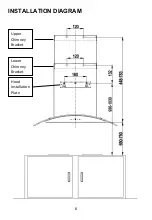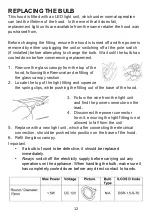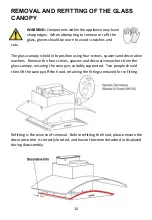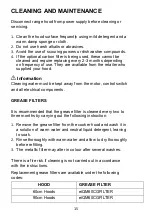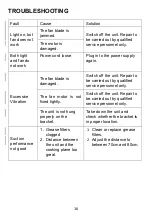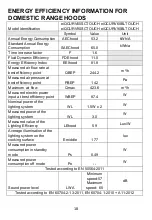
8
INSTALLATION
BEFORE INSTALLING YOUR HOOD:
•
Unpack the hood and check that all functions are working. Ensure that
the voltage (V) and the frequency (Hz) indicated on the serial plate
match the voltage and frequency at the installation site.
•
Check that the area behind the installation surface to be drilled is clear
of any electrical cables or pipes, etc.
•
The surfaces of the hood are very easily damaged during installation if
grazed or knocked by tools. Please take care to protect the surfaces
during installation.
•
Protect the hob surface with cardboard, or similar, to prevent damage
occurring whilst the hood is being installed above.
•
The manufacturer shall not be liable for any failure to observe all
safety regulations in force for the correct and normal operation of
electrical products.
•
Ensure the wall is level and the installation plates are horizontal to
prevent grease from accumulating within the hood.
•
Ensure the power has been turned off at the mains before starting
installation.
•
Connection to the mains supply must be in an accessible location.
•
You may need the following tools to complete this installation:
•
Drill appropriate for your wall
•
Phillips Screwdriver
•
Tape Measure
•
Hand Saw or Jig Saw
•
Electrical wiring must be done by a qualified person in accordance with
all applicable codes and standards, including fire rated construction.
INFORMATION
•
Sufficient air is needed for proper combustion and exhaustion of gases
through the flue (chimney) for fuel burning equipment to prevent back
drafting. Ductless fans must always be vented to the outdoors.
•
When assessing the air pressure, the entire ventilation system in the
house/apartment must be considered.
•
All legal regulations must be observed for the conveyance of exhaust
air. If the extractor hood is used in recirculating mode with the optional
carbon filter, there are no operating restrictions.






